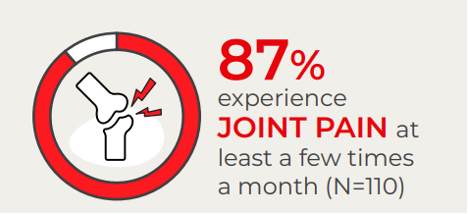Carefully controlled schedules. Undercurrents of uncertainty. Persistent pain. People who are living with hemophilia B, and those who love them, face a lifetime of managing the complexities of this condition.
While significant advancements have been made in the treatment of hemophilia B, there is still a desire for new treatment options to address unmet needs for people with moderate to severe forms of the condition.
In fact, a recent CSL Behring-sponsored survey on the burdens of living with hemophilia B found that even with treatment, people with hemophilia B are still experiencing spontaneous bleeds and joint pain and would consider switching to a new therapy that may be more effective. The online survey conducted by CSL Behring in partnership with the Coalition for Hemophilia B included 110 people with the rare bleeding disorder who are on either short-term or long-term prophylactic treatment.
The survey revealed that during a six-month period, respondents reported an average of 4.2 spontaneous bleeds and 2.2 joints bleeding three or more times.

Additionally, 87% of respondents reported experiencing joint pain at least a few times a month.

“The survey really highlighted the concerns and challenges that people with hemophilia B still face,” said Kim Phelan, Chief Operating Officer of The Coalition for Hemophilia B. “Spontaneous bleeds, joint damage and joint pain are just a few of the burdens that some in the hemophilia B community must live with.
With up to 156 intravenous infusions per year, people with hemophilia B are also at risk for vein collapse.

The life-long effects of living with and managing hemophilia B however aren’t just physical. More than 40% of people living with hemophilia B experience depression, anxiety, or other psychological disorders.
As new treatments become available to potentially address the unmet needs within the hemophilia B community, discussion with healthcare professionals on treatment goals is essential. It’s time to ask, is there a better treatment option for me?

